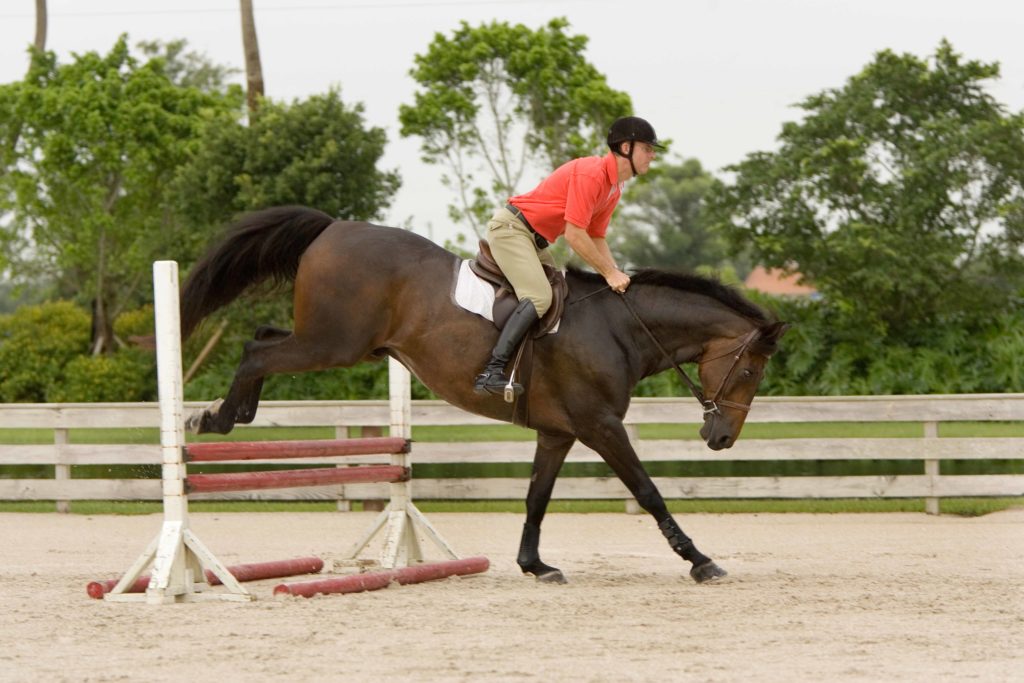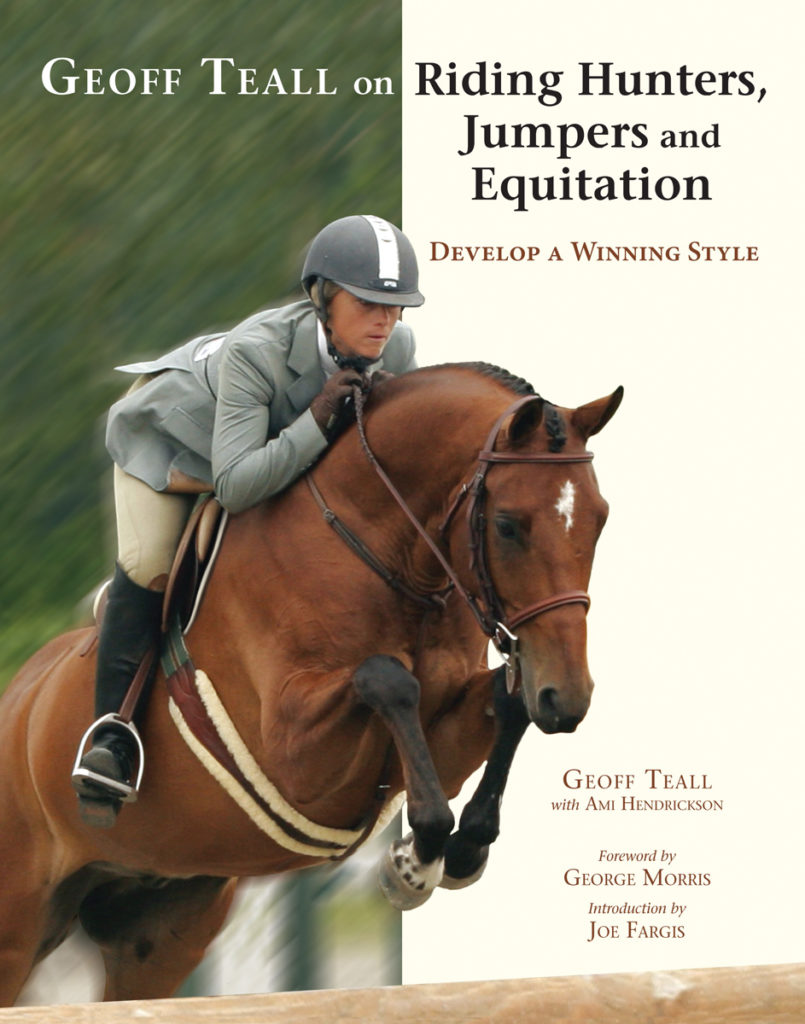This excerpt from “Geoff Teall on Riding Hunters, Jumpers and Equitation” by Geoff Teall is reprinted with permission of Trafalgar Square Books.
In this excerpt from his book Geoff Teall on Riding Hunters, Jumpers and Equitation, esteemed hunter and hunt seat equitation judge, trainer and clinician Geoff Teall provides tips for one piece of the perfect riding position puzzle.
Soft hands make a soft mouth. Stiff hands make a stiff mouth. Dead hands make a dead mouth. Whatever kind of hands you ride with, that is the kind of mouth that you will create in your horse.
Your hands and arms should be soft and supple. Suppleness is the foundation of feel. You want to feel the horse’s mouth without hanging on it.

Geoff Teall in the ring – straight lines. Photo by Miranda Lorraine.
Aim for Independence
Independent hands and an independent seat are the goals of every serious rider. When you achieve them, your balance is through your legs and base. You don’t use your reins for security or to keep you on the horse. Instead, you use your hands and arms for communication.
When your leg is long and tight, when you have done your work without stirrups, when you have done your two-point work, and when you are totally secure on the horse, then you will have independent hands.
The ideal, of course, is to develop soft, supple, quiet hands that operate independently of the body. Such hands allow you to subtly communicate with the horse. They maintain constant, light contact. They influence without interfering.
The Line to the Mouth
One of the most important elements of developing good hands is the concept of maintaining a straight line to the horse’s mouth. You should be able to draw a line from the bit through the reins to your hands, then through the forearm straight to your elbow.
If you are going to break that line, you are better off breaking it above the line rather than below it. In other words, raising your hands so the reins move the bit up into the corners of the horse’s mouth is preferable to dropping your hands and pulling the bit down on the bars of the mouth.
Looking for the Ground
Ideally, you want to be in a position to influence the corners of the horse’s mouth. You want to ride in such a way that will allow him to accept your hands. The ultimate point of good hands is to teach the horse to reach out and down with his neck—to look for the ground.
If you are influencing the corners of the mouth, when the horse accepts your hand, it will be easy to relax on his mouth. His head will either remain where it was or reach out and down. He will maintain self-carriage and continue to work forward.
Conversely, whenever you cause the bit to work on the bars of the horse’s mouth, the horse’s head will come up. Even if he flexes his neck somewhat and seems to accept your hands, his head will come up as soon as you relax tension on the reins.
This is the opposite of your goal of having a horse that stretches forward. Therefore, it is very important to maintain a straight line to the horse’s mouth. To do so, supple arms and hands are essential.
Soft, Straight, and Supple
When working on position, remember to keep your hands soft. Soft hands are sympathetic hands. They are following hands. They come from the rider being supple in the elbow and shoulder. They come from the rider being empathetic—feeling what the horse wants and being sensitive to it. Having soft hands is a far greater asset than having hard hands in perfect position.
When your arms are supple, they are relaxed at the shoulders and the elbows. The entire arm is elastic, relaxed, and capable of following the horse’s mouth, head, and neck.
As the horse moves forward into the bit and establishes contact, you should have a stretching feeling in your elbows. Slight pressure is necessary in order to keep the contact. Keep the line from bit to elbow straight, but remain relaxed, soft, and supple.
Making Contact
Contact is often a misunderstood concept among riders. Contact is about establishing a light, consistent means of communication with your horse through the reins. It is not about pulling on the reins to create an artificial frame or to hold the horse’s head in a particular position.
Think of contact as “relaxed tension.” The horse should be working forward so that he reaches out with his head and neck. Ideally, he actually pulls a little on your hands.
You can only feel the horse’s mouth if there is no loop in the reins. If the reins have a loop—or slack—in them, there is air between your hands and the bit. At that point, contact has been lost and you cannot feel the horse’s mouth through the reins.
Contact involves putting your horse enough in front of your legs that he is pulling slightly forward. The key to the concept is that the horse reaches forward and creates the contact with you. You do not pull backward and force contact with him.
When done correctly, contact allows you to have a light feel of the horse’s mouth without influencing the rest of his body. In other words, you want to be able to feel the horse’s mouth without affecting his balance, without slowing him down, and without making any part of his body—including his mouth—stiffen up in resistance.
Pick up your copy of Geoff Teall on Riding Hunters, Jumpers and Equitation by Geoff Teall here.

